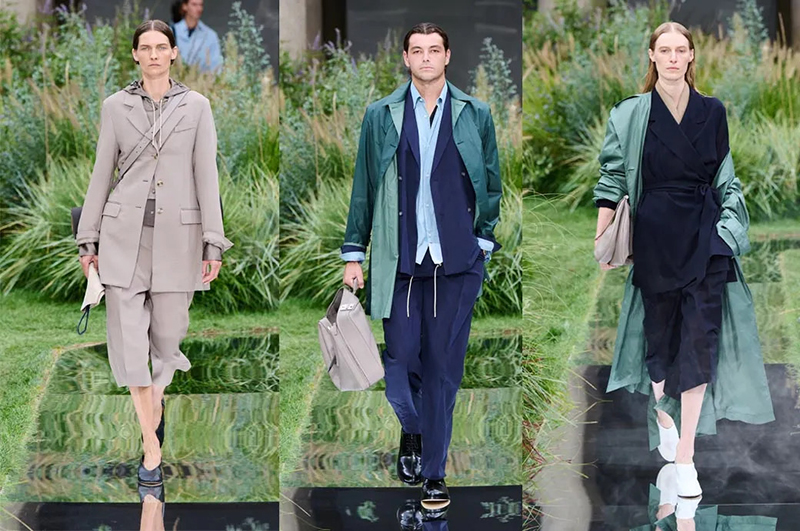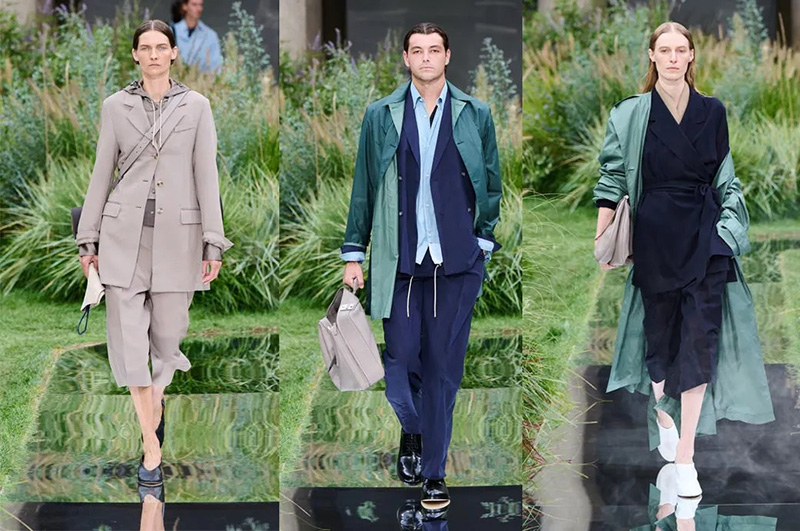
Source: www.fibre2fashion.com
Following its CorpCore-themed Fall/Winter 2023 runway show—which reimagined tailoring with modern iterations of classic suiting and on-duty dressing staples—for Spring/Summer 2025, BOSS unveiled a collection that broke with the conventional parameters of corporate attire. Staged at the Palazzo del Senato in Milan and presented under the theme “Out of Office,” the runway looks deconstructed a more formal dress code to create a clocked-out approach to an elevated 24/7 lifestyle—allowing for broader self-expression and a more balanced outlook on life.
The courtyard of the palazzo was transformed into a verdant oasis of calm: an aesthetically soothing landscape of gentle reliefs in a city defined by its hustle and bustle. Models walked along an organic, winding runway through the botanical scenery, further evoking a contrast between traditional corporate dress structures and the concept of 5-9 escapism.
The collection reflects the overall ethos derived from this removal of structure, while inviting a sophisticated sense of off-the-clock decompression. This is seen—for the first time ever on the BOSS runway—in the inclusion of sporty style elements and accessories, such as drawstring cinching mechanisms, yoga mats, and tennis racket bags, as well as selected pieces that draw inspiration from sleepwear, such as pajamas and dressing gowns.
Trouser hems were raised above the ankle across womenswear looks, while other standout elements such as blazers, skirts, dresses, and trench coats offer the wearer increased freedom of movement through wrapped construction and elegant draping. Tailoring darts were added to traditionally casual cuts such as bomber jackets to create voluminous sleeves, and paired with drawstring-embellished tops and hoodies. A backless, wrapped tunic dress stood out with its draped frontal pleating and a neckline skimming the lower back. Luxe fabrics ranged from wool to silk and leather. Accessories featured a more laid-back approach that broke with traditional formal styles, in the form of pashminas and collapsed hobo bags, while most shoes featured gently rounded toes—in contrast to the strong points and squared-off shapes of earlier collections.
In addition to the three-button suits, menswear saw more casual shirting silhouettes, such as single-pocket styles with concealed button plackets and drawstring hems, paired with tailored trousers with lengths extending just beyond the knee. Evening-ready pieces include deconstructed tailored coats and jackets in silk with shawl lapels and piping finishes. Footwear includes low-profile sneakers or leather slides with a slipper look and feel—both crafted in Italian leather. For finishing touches, in addition to pashminas and flat caps, men’s accessories saw the removal of traditionally structural confines, such that pieces were collapsed, as seen in the form of slouchy briefcases, document holders, and sports-inspired bags.
